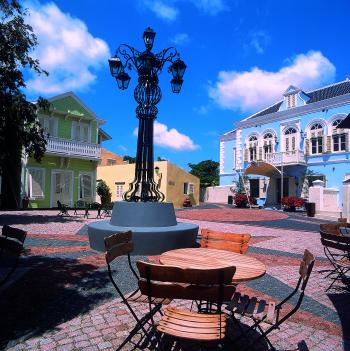Museum Kurá Hulanda in Curaçao
This item appears on page 32 of the September 2016 issue.
Most travelers to Curaçao are attracted by its white-sand beaches, interesting history and rich cultural tapestry. When my wife, Fyllis, and I visited in January 2016, we also discovered a very different gem of a museum that, alone, would make a trip to this Southern Caribbean island worthwhile.
The Sonesta Kura Hulanda Village & Spa (Langestraat 8, [Otrobanda], Willemstad, Curaçao, Netherlands Antilles; phone +599 9 434 7700, www.kurahulanda.com/en) is an inviting and intriguing virtual neighborhood nestled in the capital city of Willemstad.
The boutique resort is scattered throughout 16 meticulously restored 18th- and 19th-century Dutch-colonial houses set among lovely courtyards and interspersed with pools, restaurants, a spa and fitness center and more.
Of greatest interest to Fyllis and me was a museum that is compact in size but world-class in terms of its collection and the stories related. Located on the hotel grounds, the Museum Kurá Hulanda (Klipstraat 9, Otrobanda, Willemstad; phone +5999 434 7700) focuses on the predominant cultures of Curaçao and their African roots.
The museum occupies the site of a former slave merchant’s home and a courtyard where men, women and children once were sold to the highest bidder. Replicas of twin pillars remind visitors of times past when slaves were punished by being tied to them and whipped.
Separate exhibits in the museum are devoted to the origin of man, Mesopotamian relics, West African empires, pre-Columbian gold, the African slave trade and Antillean art.
Among items in the Origin of Man display are fossils and skulls from archaeological finds in Africa. The Lands of Abraham area includes more than 400 artifacts, some as old as 5,000 years.
A variety of items, including historical documents, relate the story of African-Americans in North America, following their path from slavery and conflict to the eventual assimilation of their descendants.
Among objects in the collection are animal traps that were used to recapture escaped slaves, a cage in which people were locked and made to sit in the hot sun, and branding irons that seared the owners’ initials into the flesh of slaves.
For Fyllis and me, one of the most moving displays was a replica of the hold of a slave ship. It demonstrates how people were crowded onto wooden platforms, where they could hardly sit, much less stand, to be transported from their homeland to a distant, different place and their new lives as slaves.
The sharp contrast between victims of that fate and the civilizations that once thrived throughout Africa is one of the most dramatic chapters related. It provides reminders that the continent was the birthplace of humanity and civilization and that while Europe was shackled in its Dark Ages, much of Africa was experiencing a renaissance.
Museum entry fees are $10, adult, and $7, senior (62 and over).
The connection with cultures and history at the museum extends to the 82 guest rooms scattered throughout Kura Hulanda Village. To avoid the cookie-cutter feel of a typical hotel, each room and suite is unique in size and shape. Furnishings include hand-carved teak and mahogany antiques set against a backdrop of decorative hand-painted walls and original art created by local artisans.
Depending on season, nightly room rates at the Kura Hulanda Village range from $289 to $359, and suites run $369-$599.
VICTOR BLOCK
Washington, DC

